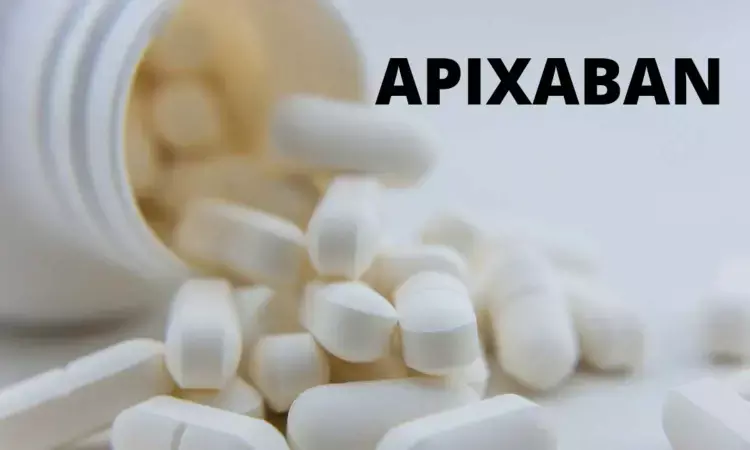- Home
- Medical news & Guidelines
- Anesthesiology
- Cardiology and CTVS
- Critical Care
- Dentistry
- Dermatology
- Diabetes and Endocrinology
- ENT
- Gastroenterology
- Medicine
- Nephrology
- Neurology
- Obstretics-Gynaecology
- Oncology
- Ophthalmology
- Orthopaedics
- Pediatrics-Neonatology
- Psychiatry
- Pulmonology
- Radiology
- Surgery
- Urology
- Laboratory Medicine
- Diet
- Nursing
- Paramedical
- Physiotherapy
- Health news
- Fact Check
- Bone Health Fact Check
- Brain Health Fact Check
- Cancer Related Fact Check
- Child Care Fact Check
- Dental and oral health fact check
- Diabetes and metabolic health fact check
- Diet and Nutrition Fact Check
- Eye and ENT Care Fact Check
- Fitness fact check
- Gut health fact check
- Heart health fact check
- Kidney health fact check
- Medical education fact check
- Men's health fact check
- Respiratory fact check
- Skin and hair care fact check
- Vaccine and Immunization fact check
- Women's health fact check
- AYUSH
- State News
- Andaman and Nicobar Islands
- Andhra Pradesh
- Arunachal Pradesh
- Assam
- Bihar
- Chandigarh
- Chattisgarh
- Dadra and Nagar Haveli
- Daman and Diu
- Delhi
- Goa
- Gujarat
- Haryana
- Himachal Pradesh
- Jammu & Kashmir
- Jharkhand
- Karnataka
- Kerala
- Ladakh
- Lakshadweep
- Madhya Pradesh
- Maharashtra
- Manipur
- Meghalaya
- Mizoram
- Nagaland
- Odisha
- Puducherry
- Punjab
- Rajasthan
- Sikkim
- Tamil Nadu
- Telangana
- Tripura
- Uttar Pradesh
- Uttrakhand
- West Bengal
- Medical Education
- Industry
High Bleeding Risk with 5mg Apixaban among patients with Atrial Fibrillation with CKD compared to lower dose

A recent study published in the Circulation Journal found the potential risks and benefits associated with different doses of apixaban in patients suffering from atrial fibrillation (AF) and severe chronic kidney disease (CKD). The research, conducted using electronic health record data from the Optum Labs Data Warehouse, focused on comparing the risks of bleeding and stroke/systemic embolism between two dosages of apixaban, 5 mg, and 2.5 mg.
The study identified 4,313 new apixaban users with AF and CKD stage 4/5 who started treatment between 2013 and 2021. The researchers adjusted for baseline characteristics using inverse probability of treatment weighting and employed statistical models to account for the competing risk of death.
Among the patients, 40% received the 5 mg apixaban dose, while 60% received the 2.5 mg dose. Patients on the higher 5 mg dose were generally younger, had a greater body weight, and higher serum creatinine levels. However, there was no significant difference in mean estimated glomerular filtration rate between the two groups.
In the analysis, it was found that the 5 mg apixaban dose was associated with a higher risk of bleeding, with an incidence rate of 4.9 events per 100 person-years compared to 2.9 events per 100 person-years for the 2.5 mg dose. This translated to an incidence rate difference of 2.0 events per 100 person-years and a subdistribution hazard ratio of 1.63.
However, there was no significant difference between the two doses regarding the risk of stroke/systemic embolism or death. The incidence rates for these outcomes were similar in both groups.
The authors concluded that in patients with AF and severe CKD, the use of the 5 mg apixaban dose was associated with a higher risk of bleeding compared to the 2.5 mg dose. This finding aligns with dosing recommendations from the KDIGO Guidelines and the European Medicines Agency, which suggest lower doses for this population. These recommendations differ from those issued by the US Food and Drug Administration.
This observational study highlights a 1.6 times higher risk of bleeding with the 5 mg apixaban dose compared to the 2.5 mg dose in AF patients with severe CKD. While no significant differences were observed in stroke/systemic embolism or death, the results suggest that the lower dose may be a safer choice for this patient population.
Reference:
Xu, Y., Chang, A. R., Inker, L. A., McAdams-DeMarco, M., Grams, M. E., & Shin, J.-I. (2023). Associations of Apixaban Dose With Safety and Effectiveness Outcomes in Patients With Atrial Fibrillation and Severe Chronic Kidney Disease. In Circulation. Ovid Technologies (Wolters Kluwer Health). https://doi.org/10.1161/circulationaha.123.065614
Neuroscience Masters graduate
Jacinthlyn Sylvia, a Neuroscience Master's graduate from Chennai has worked extensively in deciphering the neurobiology of cognition and motor control in aging. She also has spread-out exposure to Neurosurgery from her Bachelor’s. She is currently involved in active Neuro-Oncology research. She is an upcoming neuroscientist with a fiery passion for writing. Her news cover at Medical Dialogues feature recent discoveries and updates from the healthcare and biomedical research fields. She can be reached at editorial@medicaldialogues.in
Dr Kamal Kant Kohli-MBBS, DTCD- a chest specialist with more than 30 years of practice and a flair for writing clinical articles, Dr Kamal Kant Kohli joined Medical Dialogues as a Chief Editor of Medical News. Besides writing articles, as an editor, he proofreads and verifies all the medical content published on Medical Dialogues including those coming from journals, studies,medical conferences,guidelines etc. Email: drkohli@medicaldialogues.in. Contact no. 011-43720751


